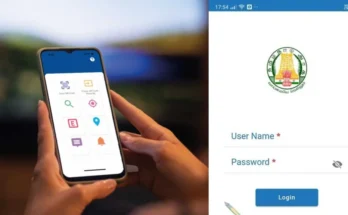Technology has transformed the way people access financial services. What once required days of paperwork and multiple visits to the bank can now be done in minutes through a smartphone. Among the most impactful innovations are bank loan apps, which have redefined lending by making it faster, simpler, and more transparent. These apps are not just tools for borrowing; they are reshaping how individuals and businesses manage financial challenges and opportunities.
Streamlined Loan Applications
The traditional loan application process often discouraged people due to its complexity. Endless forms, photocopies of documents, and in-person verifications made borrowing a tedious experience. A bank loan app simplifies this journey. Users can now apply for loans directly through their phones by filling in a few details and uploading digital copies of required documents. The process is intuitive, quick, and accessible, reducing the gap between need and access.
Instant Approvals: Meeting Urgent Needs
In the past, waiting weeks for loan approval was common. This delay created stress for individuals facing emergencies such as medical bills, urgent purchases, or business funding requirements. Bank loan apps, powered by automated systems and AI-driven evaluations, provide instant approvals in many cases. This ensures that borrowers gain access to funds when they need them most, without compromising on credit assessments or due diligence.
Customized Loan Plans for Every Borrower
One of the key advantages of digital lending is flexibility. Bank loan apps offer a wide range of loan products—from short-term personal loans to long-term business financing. Borrowers can choose repayment tenures, interest rate structures, and loan amounts that best fit their financial situation. This level of customization ensures that loans are not burdensome but are instead structured to support the borrower’s unique needs.
Transparency and Security at the Core
Trust is vital when it comes to financial transactions. Bank loan apps maintain transparency by clearly displaying interest rates, processing fees, and repayment schedules upfront. There are no hidden charges, which helps users make informed decisions. Alongside transparency, these apps invest heavily in security. Advanced encryption protocols, multi-factor authentication, and secure servers safeguard sensitive user data, ensuring peace of mind for borrowers.
Bridging the Rural-Urban Divide
Access to credit has historically been limited in rural areas due to fewer physical bank branches and logistical barriers. Mobile-based lending apps overcome these challenges. As smartphones and internet connectivity reach villages, rural communities can now apply for and receive loans without leaving their locality. This inclusivity allows farmers, small traders, and rural families to access financial resources previously beyond their reach.
Role of Artificial Intelligence in Lending
Artificial Intelligence (AI) is at the heart of many modern bank loan apps. AI algorithms analyze creditworthiness by reviewing income patterns, transaction history, and even behavioral data. These insights allow the app to predict default risks and suggest loan products tailored to the user’s profile. By combining efficiency with personalization, AI ensures that the lending process is both accurate and fair.
Educating Users Through Financial Literacy
Bank loan apps are also stepping into the role of financial educators. Many now include built-in resources such as articles, tutorials, and tips on budgeting, debt management, and responsible borrowing. This focus on financial literacy ensures that users not only borrow smartly but also build long-term financial discipline, helping them avoid debt traps.
Flexible Repayment Options
Different borrowers have different income flows. Salaried professionals, small traders, and freelancers all earn differently, and rigid repayment schedules often don’t work for everyone. Recognizing this, bank loan apps offer multiple repayment options such as weekly, monthly, or even customized installment plans. This flexibility reduces stress and helps borrowers remain consistent with repayments.
Reducing Defaults with Smart Features
Missed payments are a major challenge in lending. To address this, loan apps include features like repayment reminders, automatic deductions, and loan tracking dashboards. These tools ensure that borrowers stay updated about due dates, minimizing defaults and maintaining healthy credit scores. For banks, it reduces risk; for borrowers, it prevents penalties and negative financial impacts.
Boosting Small Businesses and Entrepreneurs
For entrepreneurs, access to capital is often the difference between growth and stagnation. Traditional banks sometimes hesitate to fund small businesses due to limited collateral or lack of formal documentation. Bank loan apps fill this gap by offering specialized business loan products. Whether it is working capital, funds for expansion, or equipment purchases, these apps provide small businesses with the financial push needed to thrive.
Real-Time Loan Tracking
Transparency continues after the loan is disbursed. With real-time tracking features, borrowers can monitor every stage of their loan—from application review and approval to disbursement and repayment progress. This visibility eliminates uncertainty and gives borrowers full control over their financial commitments.
The Future of Digital Lending
The growth of bank loan apps is only the beginning. Future developments may include blockchain integration for secure loan contracts, predictive analytics for more accurate lending, and even virtual assistants that guide users through the borrowing process. With each advancement, digital lending becomes more accessible, safer, and more reliable.
Final Thoughts
Bank loan apps have revolutionized the way people borrow money. By combining speed, transparency, and inclusivity, they empower individuals and businesses to meet financial needs without unnecessary hurdles. For borrowers, the benefits include convenience, trust, and flexibility. For lenders, it means efficiency and reduced risk. As technology continues to evolve, these apps will play a central role in shaping a more connected and financially secure future.



